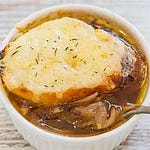Glossary of Key Terms
Wah’Kon-Tah: The central spiritual belief of the Osage, representing a pervasive life force present in all things—sun, sky, earth, and animals.
Semi-nomadic: A lifestyle characterized by a blend of settled village life and seasonal movements, typically to follow food sources or access better hunting grounds.
Matrilineal Communities: Societies where descent and inheritance are traced through the mother’s line.
Dual Chieftainship: A political system used by the Osage where one chief was responsible for peace and diplomacy, and another led during war.
Little Old Men: The council of elders in Osage society who made decisions through consensus.
Pemmican: A traditional, high-energy food made by drying meat, grinding it, and mixing it with fat and sometimes berries, used for preservation and travel.
Ozark Plateau: The rugged geographical region in what is now Missouri, Arkansas, Kansas, and Oklahoma, which was the traditional homeland of the Osage.
Longhouses: Semi-permanent dwellings made of wood, bark, and hides, used by the Osage to house extended families in their villages.
Subsistence Strategy: The methods and practices a group uses to obtain food and other necessities for survival.
Intertribal Conflicts: Conflicts or warfare that occurred between different Native American tribes.






